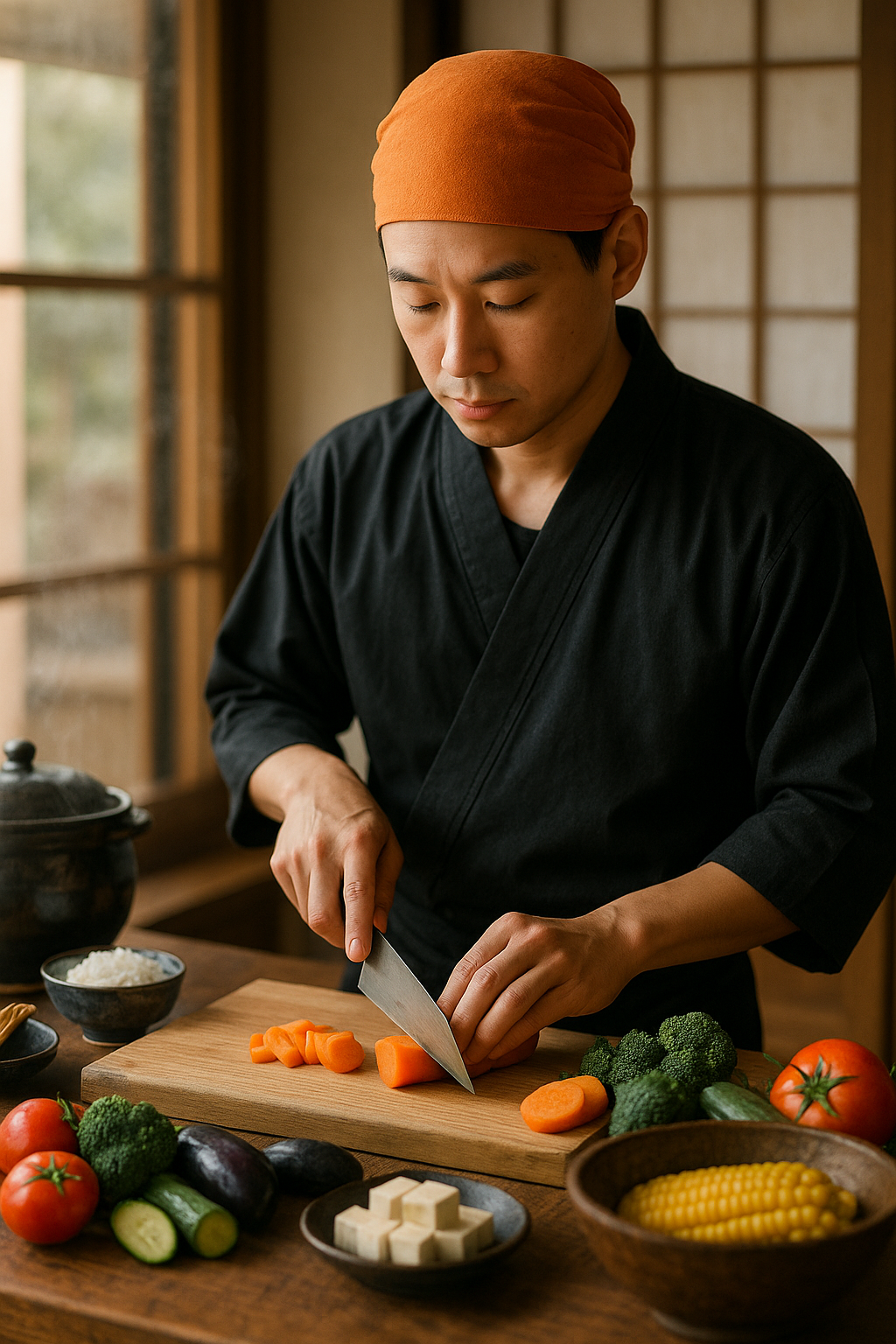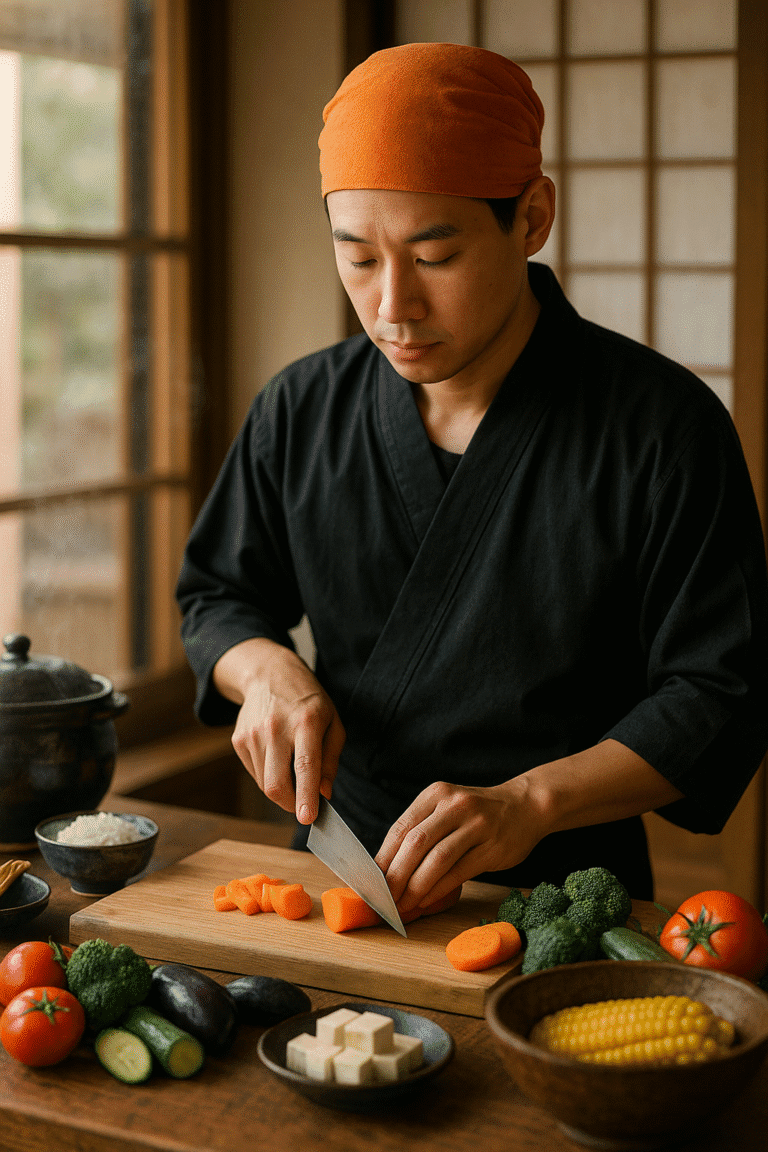Japanese cooking ceremony

Nishiki Market in Kyoto awakens early. Stalls open like flowers, and the air is already filled with the scent of toasted sesame, dashi broth, and freshly washed lotus root. We stroll among soft voices and vegetables that look as if they were hand-carved.
An elderly woman wraps shiso leaves with fingers as delicate as rice paper. A child tastes a bite of tamagoyaki and smiles broadly. And you, who perhaps didn't know it, are already learning to see things differently.
At the end of the path, a small wooden gate slides open with a whisper. We enter barefoot. The tatami smells of time. In the kitchen, everything is in order: glazed ceramic bowls, knives with soul, a container of rice covered with a white cloth.
The teacher appears. He doesn't speak, he inclines his head slightly. Every movement of his—washing his hands, lighting the fire, cutting a carrot—occurs as if there were nothing more urgent in the world.
And then, without breaking his rhythm, he begins to speak.
“My grandmother used to cook with the windows open…”
He said that rice should listen to the wind,
that if the steam was locked in, the memories could not enter.
When I was a child and cried for things I didn't understand,
He told me: 'Look how the water boils, that's what sadness is like...
But if you throw something you love into it, it turns into soup.”
Nobody asks anything. We just listen as he cuts the tofu with the precision of someone who has halved a sorrow.
The sun enters as if in a ceremony through the paper panels, and everything, absolutely everything —the knife, the bowl, the nori seaweed— seems to be in the right place.
We didn't just come to learn how to cook. We came to understand why sometimes silence heals more than words. To learn that some stories are conveyed in a spoonful of miso. And that, as her grandmother used to say, He who cooks for others also orders his own heart.
There are foods that do not feed the body, but the soul

